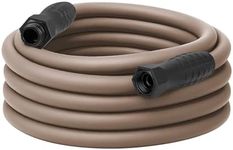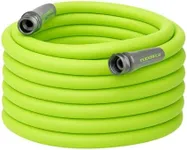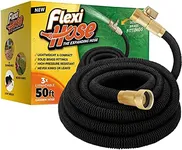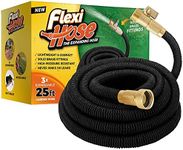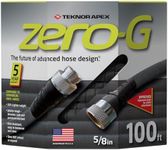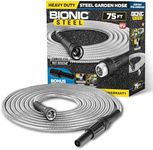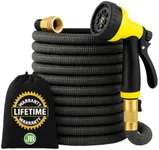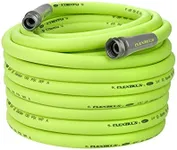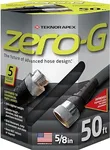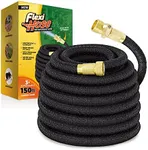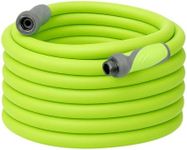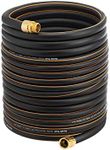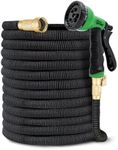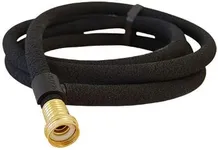Buying Guide for the Best Flexible Garden Hoses
Choosing the right flexible garden hose can make your gardening tasks much easier and more enjoyable. A good garden hose should be durable, easy to handle, and suitable for your specific watering needs. When selecting a flexible garden hose, consider the following key specifications to ensure you get the best fit for your garden.LengthThe length of the garden hose is crucial because it determines how far you can reach with it. Garden hoses typically come in lengths ranging from 25 feet to 100 feet. If you have a small garden or patio, a shorter hose (25-50 feet) may be sufficient. For larger gardens or if you need to reach distant areas, a longer hose (75-100 feet) will be more appropriate. Measure the distance from your water source to the farthest point you need to water to choose the right length.
DiameterThe diameter of the hose affects the water flow rate. Common diameters are 1/2 inch, 5/8 inch, and 3/4 inch. A 1/2 inch hose is suitable for light watering tasks and small gardens. A 5/8 inch hose is the most versatile and commonly used size, providing a good balance of water flow and pressure for most gardening needs. A 3/4 inch hose is ideal for heavy-duty watering tasks and large gardens, as it delivers the highest water flow. Consider the water pressure at your home and the type of watering tasks you will be performing to choose the right diameter.
MaterialGarden hoses are made from various materials, including vinyl, rubber, and hybrid blends. Vinyl hoses are lightweight and affordable but may not be as durable. Rubber hoses are more durable and can withstand higher water pressures and extreme temperatures, making them a good choice for heavy-duty use. Hybrid hoses combine the best features of vinyl and rubber, offering flexibility, durability, and ease of use. Choose a material based on the frequency of use and the conditions in which you will be using the hose.
FlexibilityFlexibility is important for maneuvering the hose around your garden without kinking or tangling. A highly flexible hose is easier to handle and store. Look for hoses labeled as kink-resistant or with a high flexibility rating. If you have a garden with many obstacles or tight spaces, a more flexible hose will be beneficial. Test the hose's flexibility by bending it in your hands before purchasing.
CouplingsThe couplings, or fittings, at the ends of the hose are essential for connecting to your water source and attachments. Couplings are typically made of plastic, aluminum, or brass. Plastic couplings are lightweight and inexpensive but may not be as durable. Aluminum couplings are more durable but can corrode over time. Brass couplings are the most durable and resistant to corrosion, making them a good choice for long-term use. Choose couplings based on durability and ease of connection.
Burst PressureBurst pressure indicates the maximum water pressure the hose can handle before it bursts. It is usually measured in pounds per square inch (psi). A higher burst pressure rating means the hose can withstand higher water pressures. For general gardening tasks, a hose with a burst pressure of 200-300 psi is sufficient. For heavy-duty tasks or if you have high water pressure, look for a hose with a burst pressure of 350 psi or higher. Consider your water pressure and the types of tasks you will be performing to choose the right burst pressure rating.
WeightThe weight of the hose affects how easy it is to carry and maneuver. Lighter hoses are easier to handle but may be less durable. Heavier hoses are more durable but can be more challenging to move around. If you need to frequently move the hose or have limited strength, a lighter hose may be more suitable. For heavy-duty use or if durability is a priority, a heavier hose may be a better choice. Consider your physical capabilities and the frequency of use when choosing the weight of the hose.
